Home
June 2016 - Sweeperino
A brilliant project from the inspired imagination of Ashar Farhan VU2ESE and published on his blog.
He does warn that there be "Danger : Here be Dragons" and perhaps he was thinking that it isn't going to get Hewlett Packard worried any time soon - and that's probably true - but it is a dead useful piece of test gear.
There are a couple of errors in Farhan's documentation and they are summarised in a superb write up in the June issue of the Dutch magazine "Razzies". What is more, the article shows how to extend the Sweeperino further.
One important note for all builders. Farhan uses libraries for both the Si570 and the Si5351. If you choose to use the Si570 you will still need to install the Si5351 library also. You do not need to hack around in Farhan's code to make it work (unless you have an odd Si570 like I did see the diary that Nick and I wrote). Installing libraries is covered here.
This build was actually two builds. One here and one 60 miles away at the QTH of Nick G8INE. We compared notes as we went and often a blind alley at my end resulted from a good steer from Nick. Having now both achieved working Sweeperinos we embark on the Dutch modifications mentioned above.
Below I show a low pass filter being tested. The LCD display in photo 1 and 2 shows the attenuation at two frequencies. The third shows "Specan", an application written by Farhan, with the sweep up to 20 MHz.
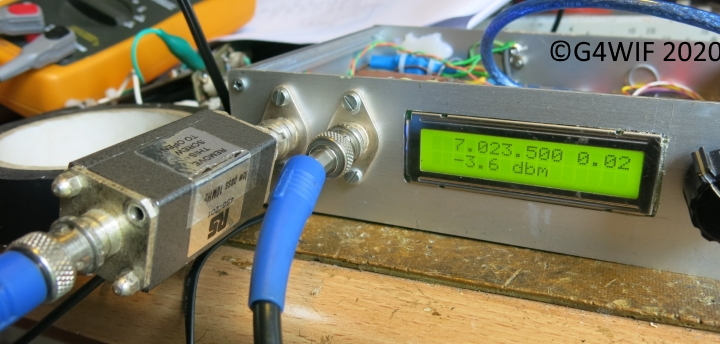
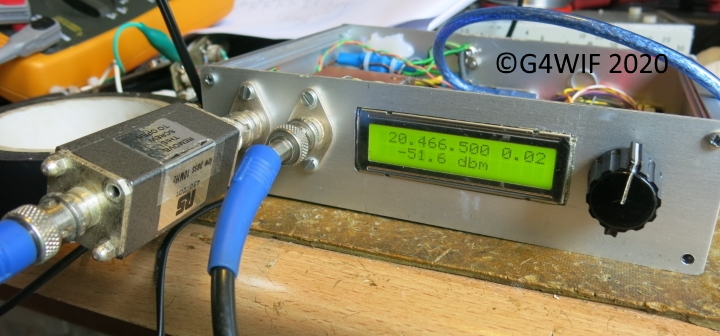
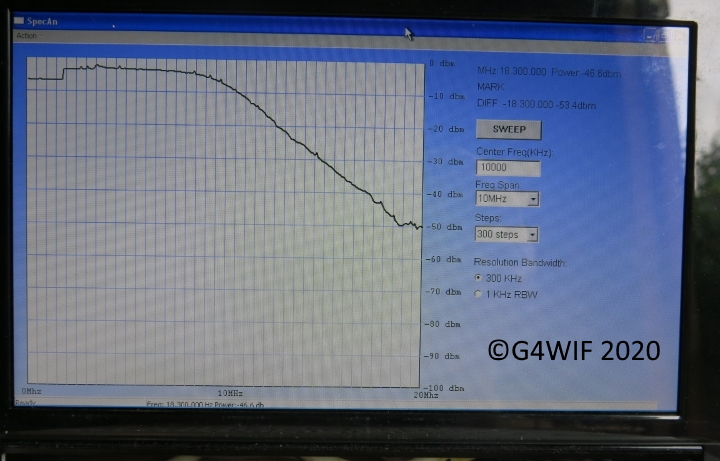
Below is the insides of my Sweeperino. The AD8307 logarithmic amplifier sits in its own screened box made from PCB material.
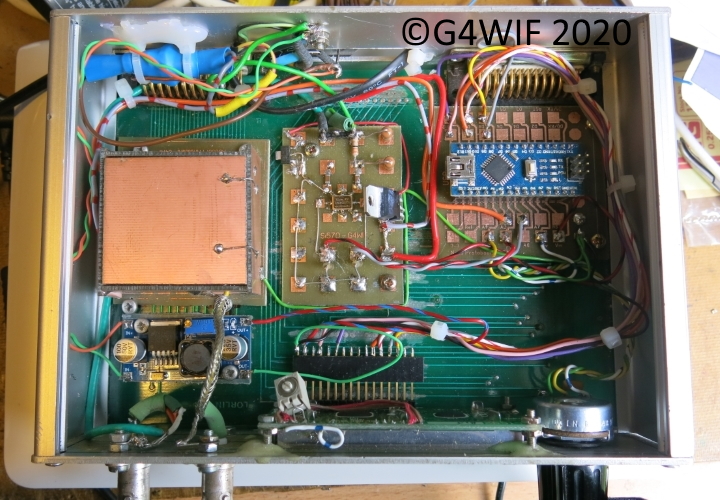
The boards are designed and etched by me at home using the toner transfer method. The box is a re purposed RS232 printer switch bought for not very much at a radio rally.
November 2016. I picked up a band pass filter kit from QRP Labs at the Rishworth QRP convention. I wanted a "prop" to use in a talk I'm giving soon. I can't believe the low prices of these kits and others that Hans Summers sells. Amazing bargains!
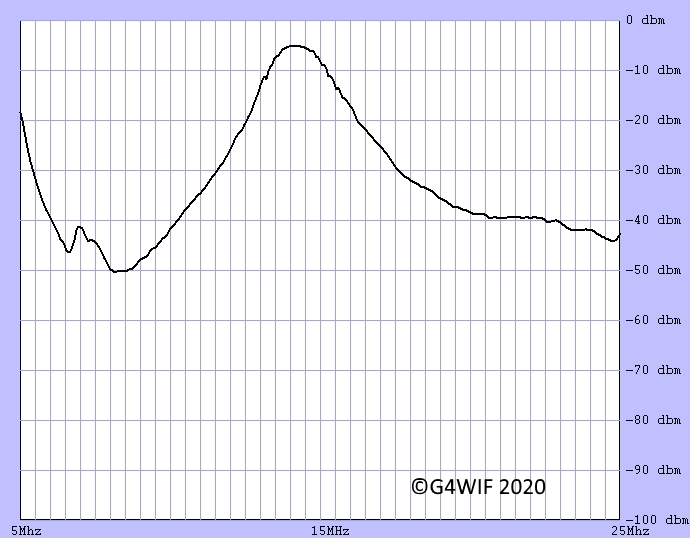
Note that the Si570 has a lower frequency limit and the reading displayed at 4MHz should be ignored.
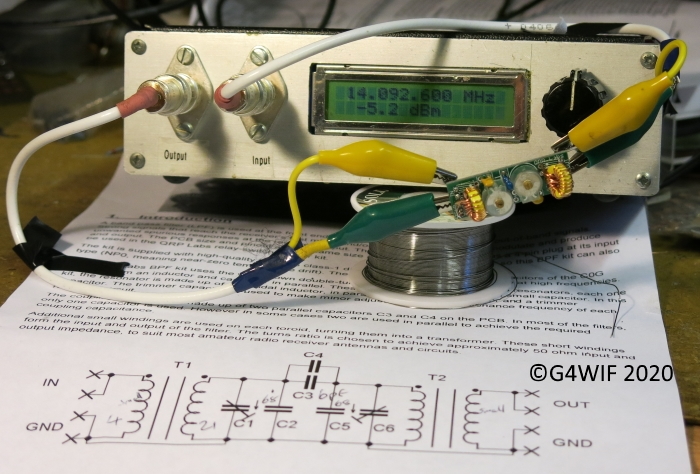
By using the front panel frequency control you can "dial up" a specific frequency and adjust to peak the filter. Then of course, you can run the scan again using the Sweeperino PC software. As you can see, I managed about -5db insertion loss. In the excellent instructions for the kit QRP labs claim much better performance and I don't doubt it. Mine is possibly not the best built example ever - and I could do some work to improve that insertion loss. However, as a "prop" for my talk at North Kent Radio Club, it will do nicely.
Onto Stage 2 - the mods suggested by the June edition of the Dutch Razzies article....